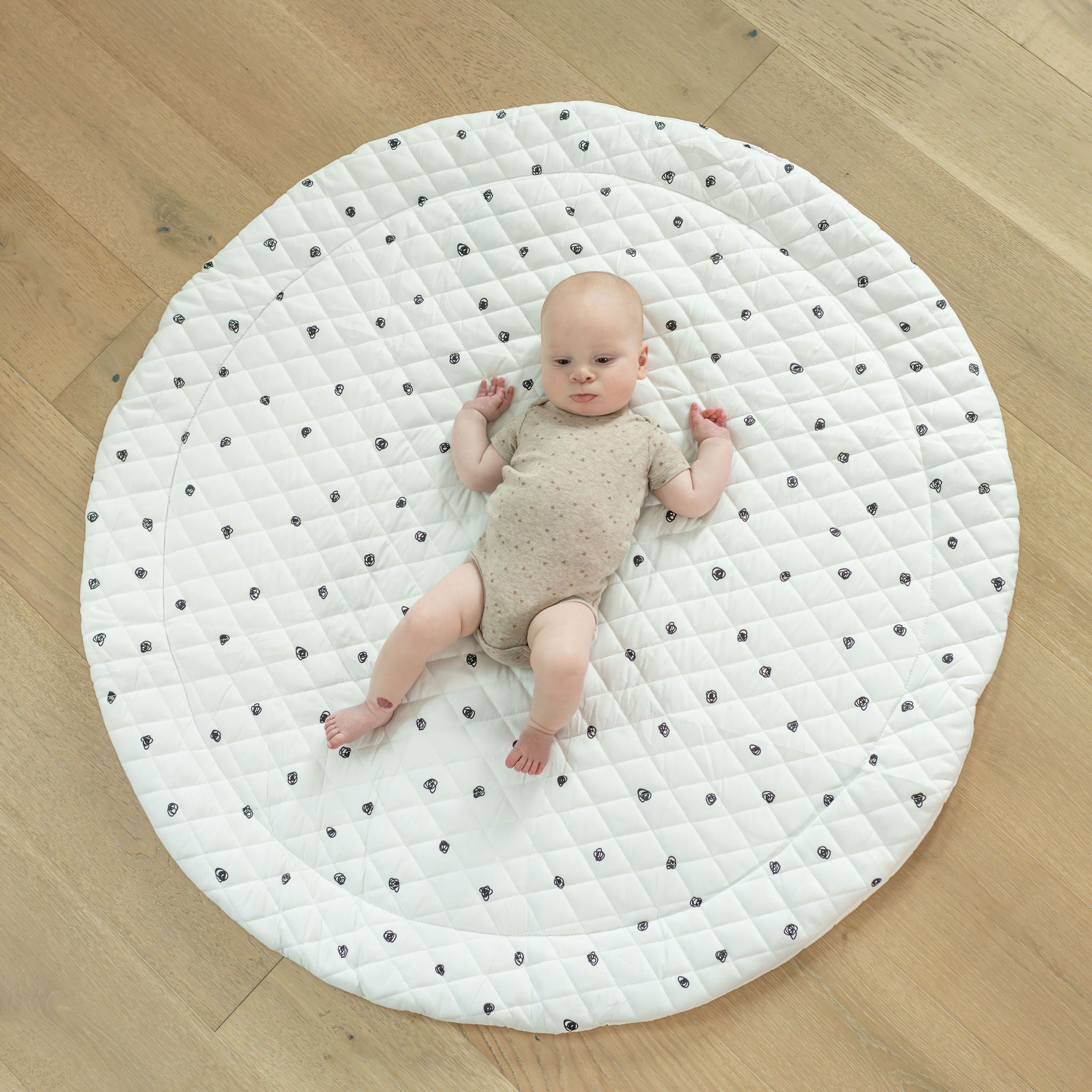Optimal Durations for Infant Floor Activities: Safety Tips Included
So, you’ve set up the perfect playmat—soft, colorful, and ready for action. But how long should your little one stay there before you need to swoop in like the superhero parent you are? Is it five minutes, ten, or the magical sweet spot where they get all the tummy time without fussing?
In this guide, we’ll explore the dos and don’ts of playmat sessions, keeping things safe and fun while sneaking in some precious me-time (or at least a hot coffee). Let’s jump in!
Recommended Timeframes for Baby Floor Play Sessions
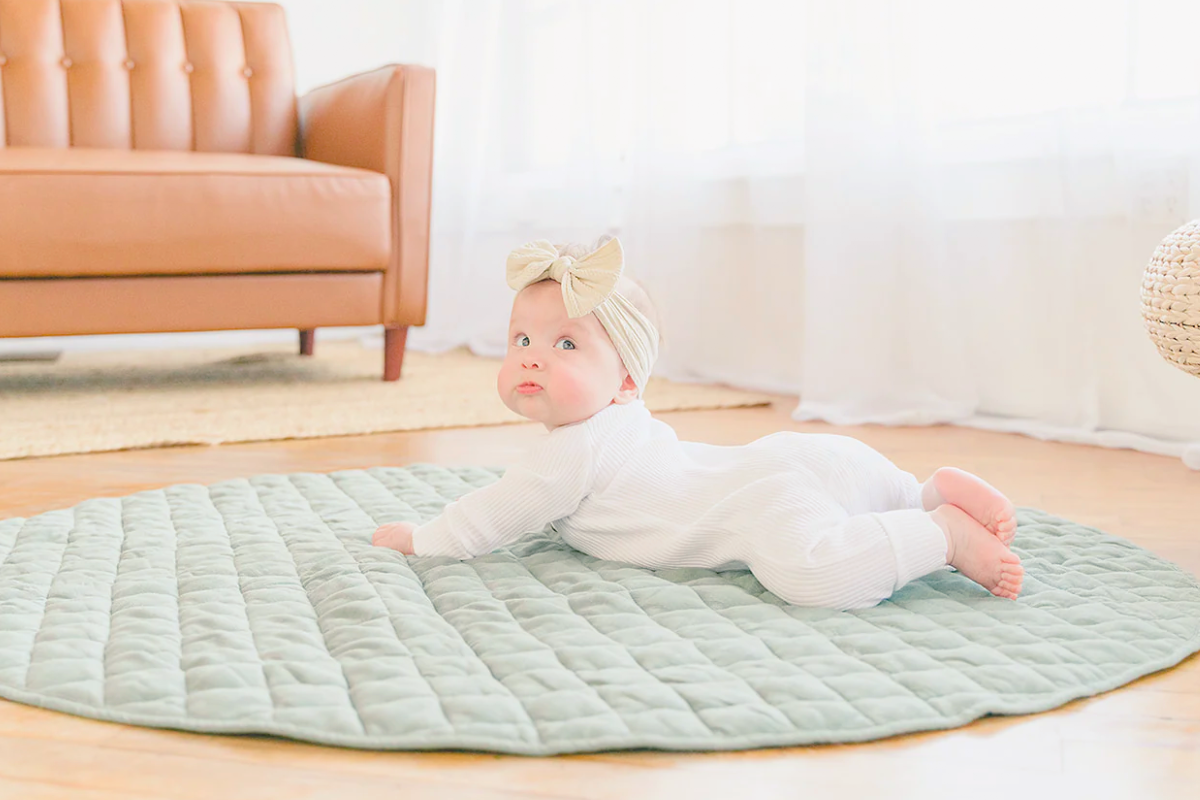
Generally, babies can spend around 30 minutes to an hour per session, and it’s safe to do this 2-3 times a day.
However, the specific time can vary depending on your baby’s age, mood, and energy levels. Below are guidelines to help you understand what’s appropriate based on different factors.
Tailoring Floor Activity Durations to Your Baby's Age
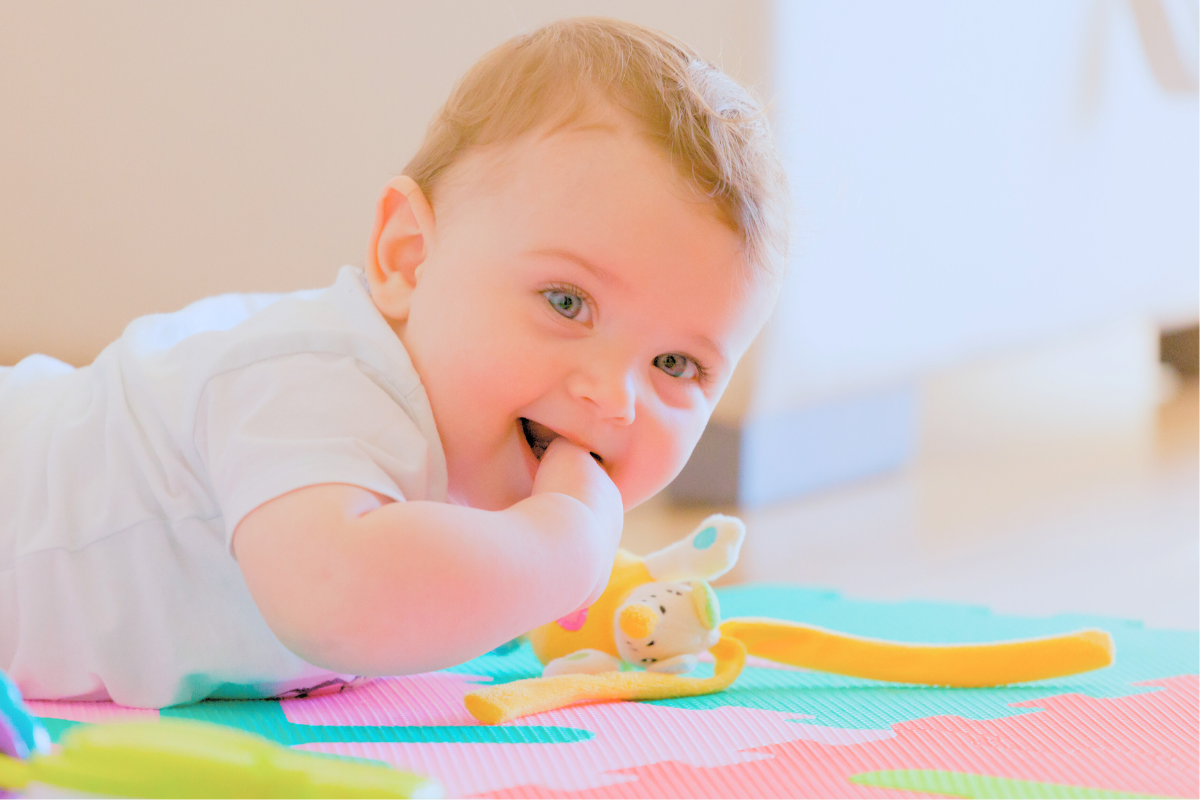
The amount of time a baby can spend on a play mat often depends on their age and developmental stage. Here’s a breakdown to help you create a safe and beneficial playtime routine:
Newborns (0-2 months)
-
Recommended time: 1-5 minutes per session, gradually increasing as they grow.
-
Babies at this stage have short attention spans and are still developing muscle strength. Short sessions of tummy time are ideal, gradually increasing from 1-2 minutes to around 5 minutes by 2 months.
-
Tip: Place them on the mat for brief tummy time sessions to help strengthen neck and shoulder muscles.
2-4 months
-
Recommended time: 10-15 minutes per session, 2-3 times a day.
-
At this age, babies are building stamina and can tolerate longer periods of tummy time.
-
Tip: Incorporate bright toys or activity gyms, like the Play Gym Set by Poppyseed Play, to keep them entertained and engaged during playtime.
4-6 months
-
Recommended time: 20-30 minutes per session, 2-3 times a day.
-
Babies become more active and curious around this stage. They start rolling, reaching for toys, and engaging with the mat for longer periods. Increasing the duration of sessions supports growing their physical strength and mobility.
6-9 months
-
Recommended time: 30-45 minutes per session, 2-3 times a day.
-
Babies can enjoy longer playmat sessions as they start to sit up, scoot, and eventually crawl. A longer time on the mat helps them practice these new skills in a safe and stimulating environment.
-
Tip: Include soft blocks, texture toys, and mirrors to encourage exploration and movement.
9-12 months
-
Recommended time: up to 1 hour per session, 2-3 times a day.
-
Tip: Rotate toys and play activities to keep your baby engaged and encourage physical and cognitive development.
Assessing the Safety of Extended Floor Play for Infants

Yes, it's safe for babies to be on play mats as long as they are supervised and the sessions are timed according to their age and comfort. However, it’s essential to monitor your baby’s cues to make sure they're comfortable and happy during their time on the mat.
Signs Your Baby Needs a Break
It’s important to monitor your baby’s reactions during playmat sessions. Babies may show signs when they need a break or a change in activity. Here are some cues to watch for:
-
Increased fussiness or crying. This may indicate discomfort or boredom.
-
Turning head away from toys. Your baby might be overstimulated or need a new activity.
-
Yawning or rubbing eyes. Signs of tiredness; your baby may need a rest or nap.
-
Loss of interest. If your baby starts to ignore toys or activities, they may need a break.
-
General restlessness. If your baby begins squirming a lot or trying to leave the mat, they might need a change of scenery or interaction.
Ensuring Safety During Your Baby's Floor Activities
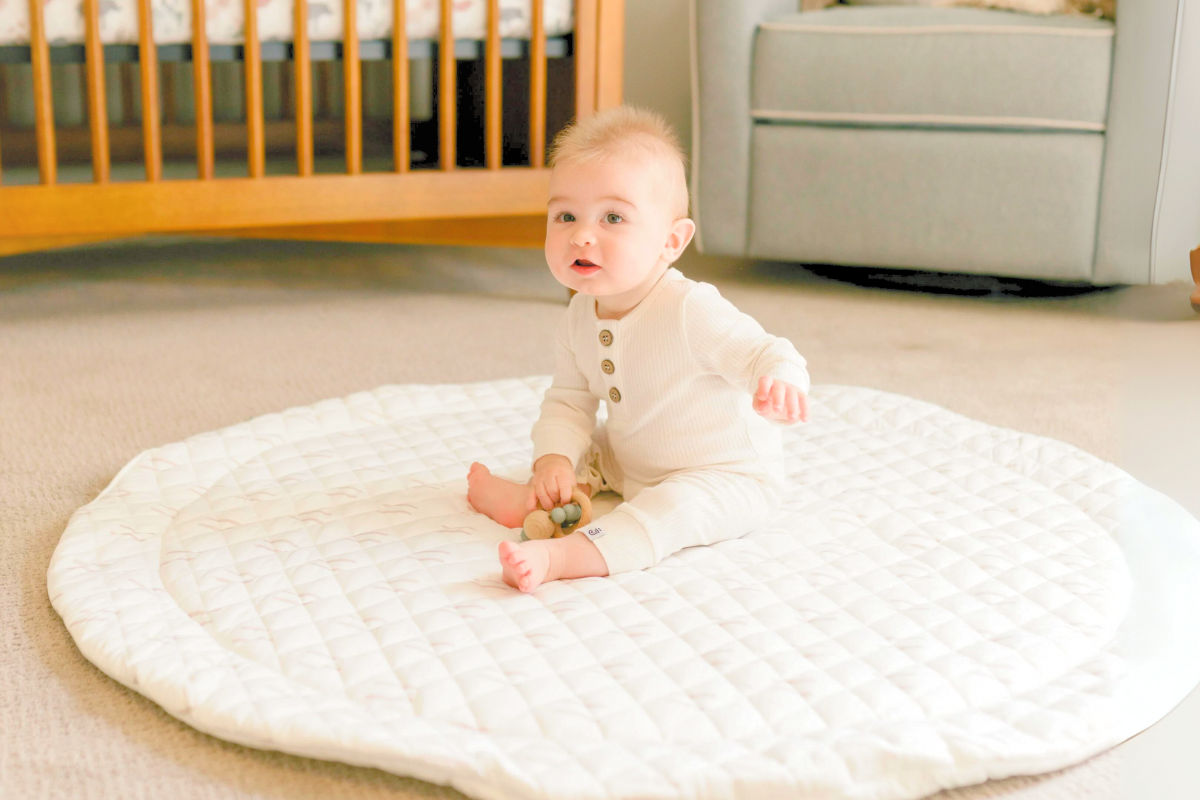
To make playmat sessions safe and enjoyable for your baby, consider the following tips:
-
Use a padded and soft mat. Choose play mats like Poppyseed Play's Padded Cotton Playmats and Quilted Linen Playmats. These are made from safe, soft materials to keep your baby’s skin irritation-free.
-
Supervise at all times. Always keep an eye on your little ones, especially if they are practicing tummy time or rolling.
-
Set up a clean and hazard-free area. Make sure the playmat is on a flat surface, away from objects that could pose a risk to your baby.
-
Incorporate toys for engagement. Use soft toys, mirrors, and activity gyms to keep your baby interested and encourage development during their time on the mat.
-
Adjust sessions based on baby’s mood. If your baby is fussy or tired, shorten the session. If they seem happy and engaged, you can extend the time slightly.
Maximizing Engagement During Infant Floor Play
Picking the right baby mat is only half the battle—making it an epic, fun-filled experience is the other half. To help your little one get the most out of their time, follow these playful steps. Get ready for baby giggles and some hands-free moments (for your coffee)!
Step 1: Find the Perfect Spot
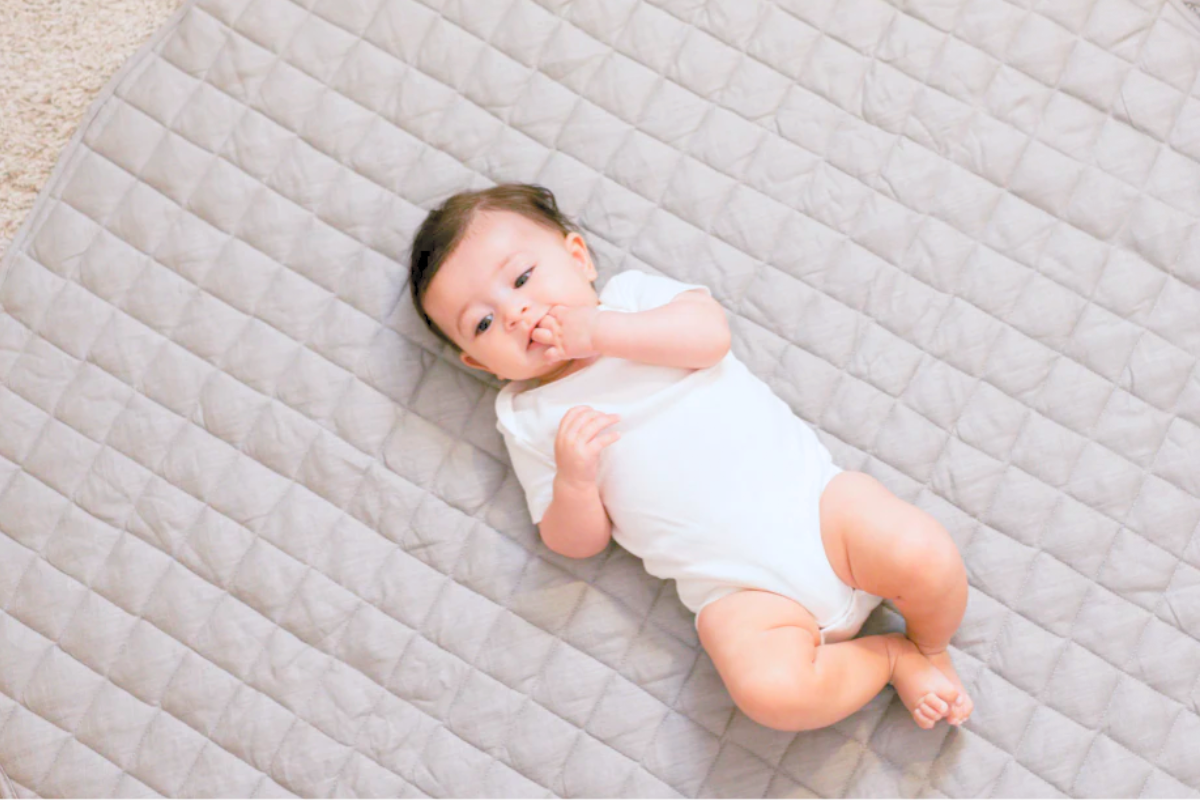
Let’s start with location, location, location:
-
Go for bright and airy. Set up the mat in a space with plenty of natural light. Babies love it, and it keeps them alert and curious about their surroundings.
-
Keep it tidy. Make sure the area is free from tiny objects or anything sharp. A clean space means worry-free playtime for both you and your baby.
-
Add some coziness. Throw in a soft blanket or pillow to prop up your little one during tummy time. It’s all about those comfy vibes!
Step 2: Rotate Toys Like a Pro
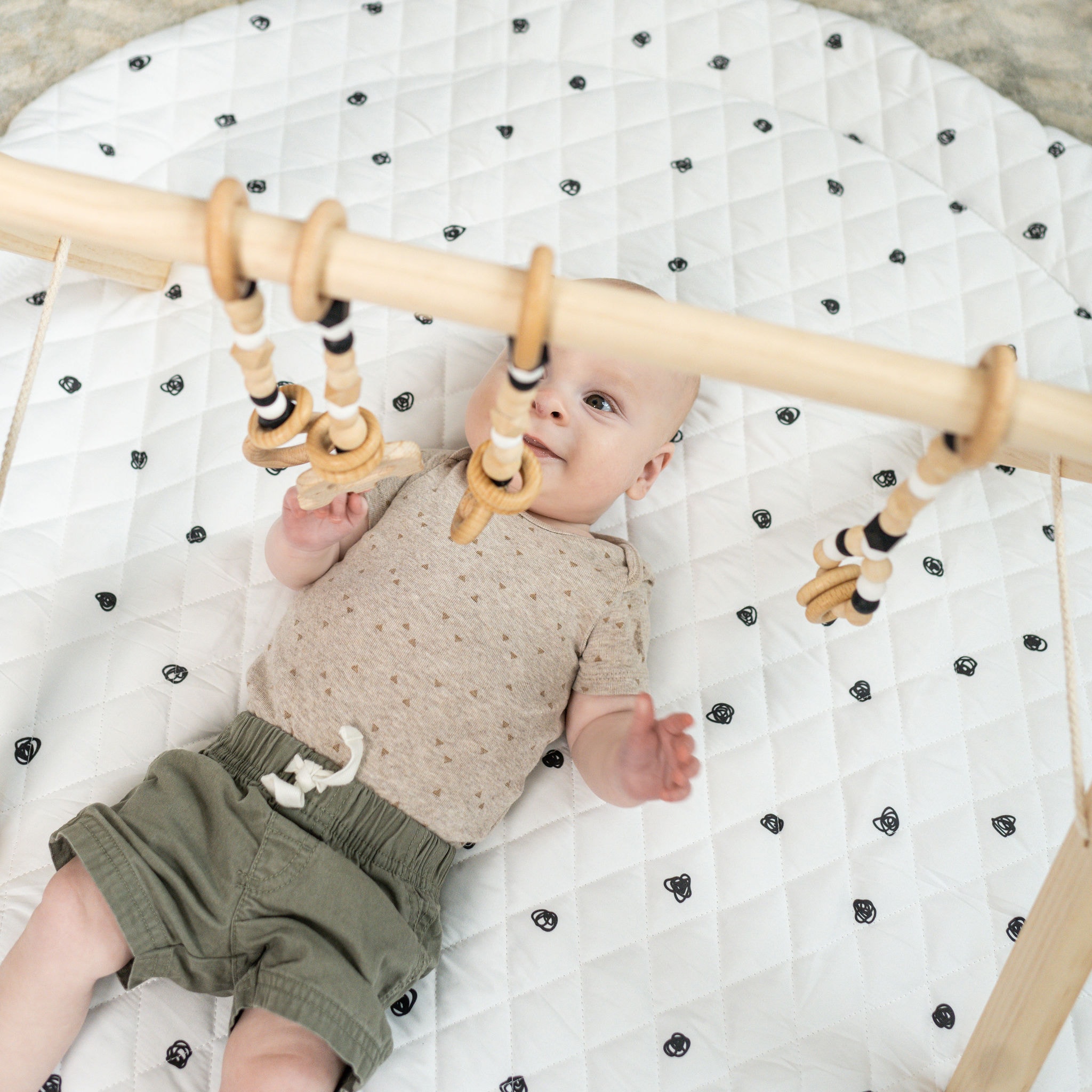
Switch things up regularly to keep your baby interested. Rotating toys can do wonders:
-
Mix up textures. Introduce multiple textures like soft plush toys, wooden and silicone teething rings, and fabric books to engage your baby’s sense of touch and keep things exciting.
-
Play with colors and shapes. Change the toys to include bright colors and different shapes. This helps with visual development and keeps your baby’s attention.
-
Add some sound. Toys that make gentle noises or play music can boost auditory skills and keep your baby grooving on their mat.
Step 3: Make Tummy Time Fun

Tummy time doesn’t have to be a struggle. Here’s how to make it a fun (and beneficial) experience:
-
Start small. Keep tummy time sessions short at first—just a couple of minutes for newborns. Gradually build up the time as they get stronger.
-
Use toys for motivation. Place bright, interesting toys just out of reach to encourage your baby to lift their head and start grabbing. It’s a fun way to build those muscles.
-
Get down there with them. Babies love seeing your face, so lay down next to them and chat or make silly faces. You’ll both have a blast!
Step 4: Add Sensory Experiences

Make their tummy time area a feast for the senses by introducing different elements:
-
Change up textures. Use toys with various textures like crinkles or soft bumps. Let your baby explore these with their hands and feet.
-
Include baby-safe mirrors. Babies love looking at themselves, so place mirrors around the mat to catch their attention and encourage self-awareness.
-
Play some gentle tunes. Soft music or soothing sounds can enhance sensory play and keep your baby relaxed and engaged.
Step 5: Encourage Independence
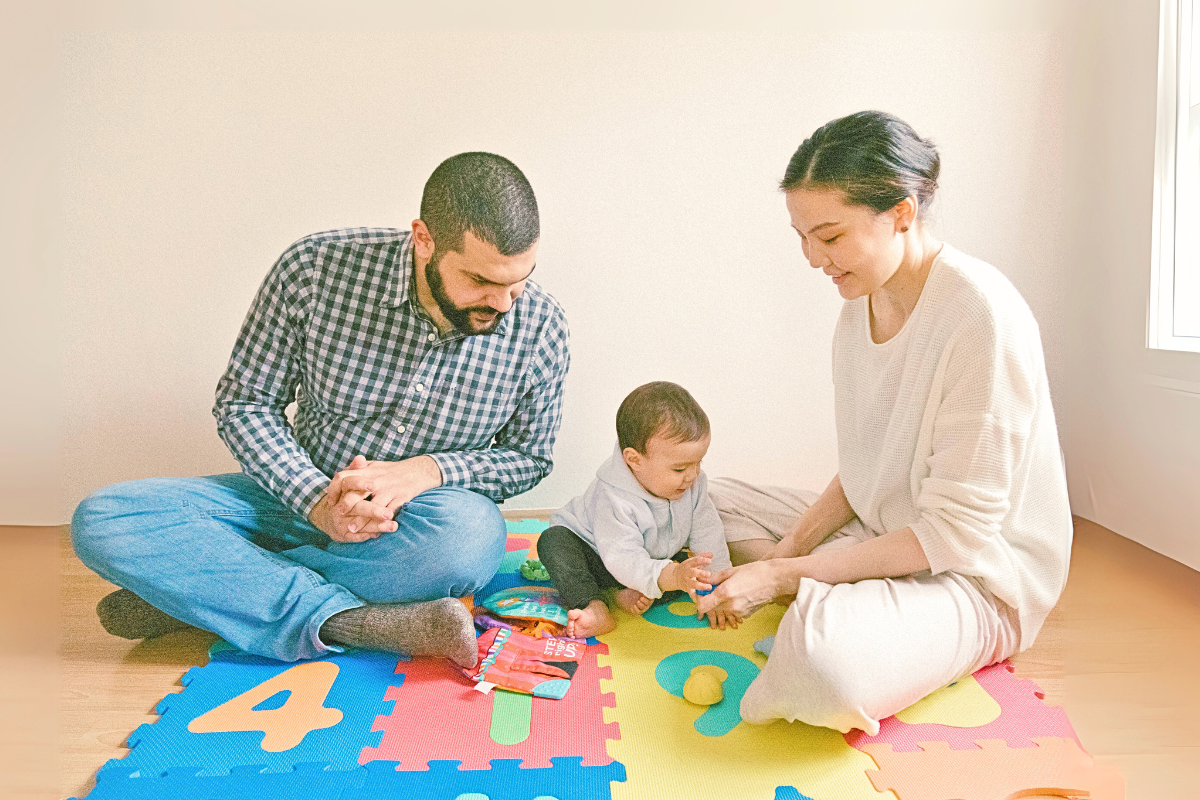
Encouraging independence while also having moments of bonding is a win-win:
-
Encourage solo exploration. Let your baby explore the mat and toys independently for short periods while you stay nearby. It builds their confidence and sense of independence.
-
Stay close. Your presence reassures your baby, so they feel secure while playing. Plus, it’s always fun to watch their little discoveries up close.
-
Mix it up with playtime together. Alternate solo play with interaction, like singing songs, reading, or playing peekaboo. It’s all about finding that balance between letting them explore and spending time together.
Developmental Advantages of Infant Floor Play Areas
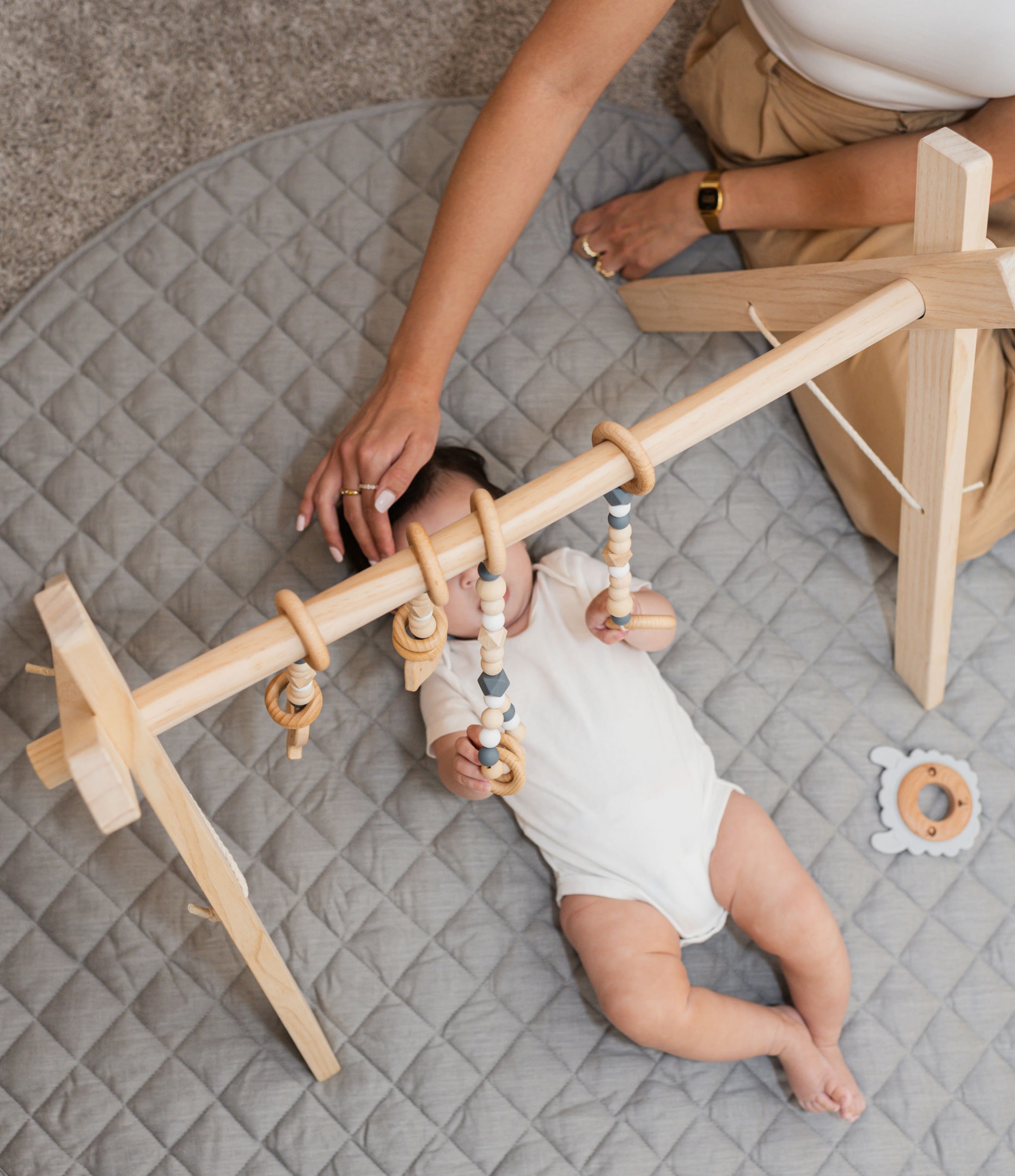
From tummy time to sensory fun, they create a safe, engaging environment where your baby can grow and learn. Let’s dive into the benefits and how you can make the most of their tummy time.
Encourages Motor Skills
Mats give babies a cushioned and stable surface to practice movements like rolling, crawling, and stretching. Tummy time builds neck and back muscles, which are key for developing physical strength and coordination.
Boosts Sensory Exploration
With their bright colors, varied textures, and interactive elements, they stimulate your baby’s senses. Exploring these features supports cognitive growth and sensory integration. Incorporate baby-safe mirrors to add a layer of fun as your baby discovers their reflection!
Supports Cognitive Development
Tummy time mats and activity gyms with engaging designs and features, such as dangling toys and different patterns and textures, encourage babies to explore and interact. This curiosity helps develop problem-solving skills and hand-eye coordination as they reach, grab, and learn cause and effect.
Creates a Safe and Hygienic Play Space
These tummy time areas provides a clean, cushioned area that’s much safer than the floor. Many mats are made from non-toxic, natural and hypoallergenic materials, keeping your baby protected from dirt, germs, and harmful chemicals. Regular cleaning is easy, too, with most mats being wipeable or machine-washable.
Promotes Independent Play
Giving your baby time to explore the playmat on their own helps foster independence and confidence. Set up toys and objects they can reach for, and let them have some time alone while you stay nearby. It’s a great way for them to discover the joy of self-directed play, while also giving you a moment to breathe (or sip your coffee)!
Selecting Suitable Floor Play Surfaces for Your Baby
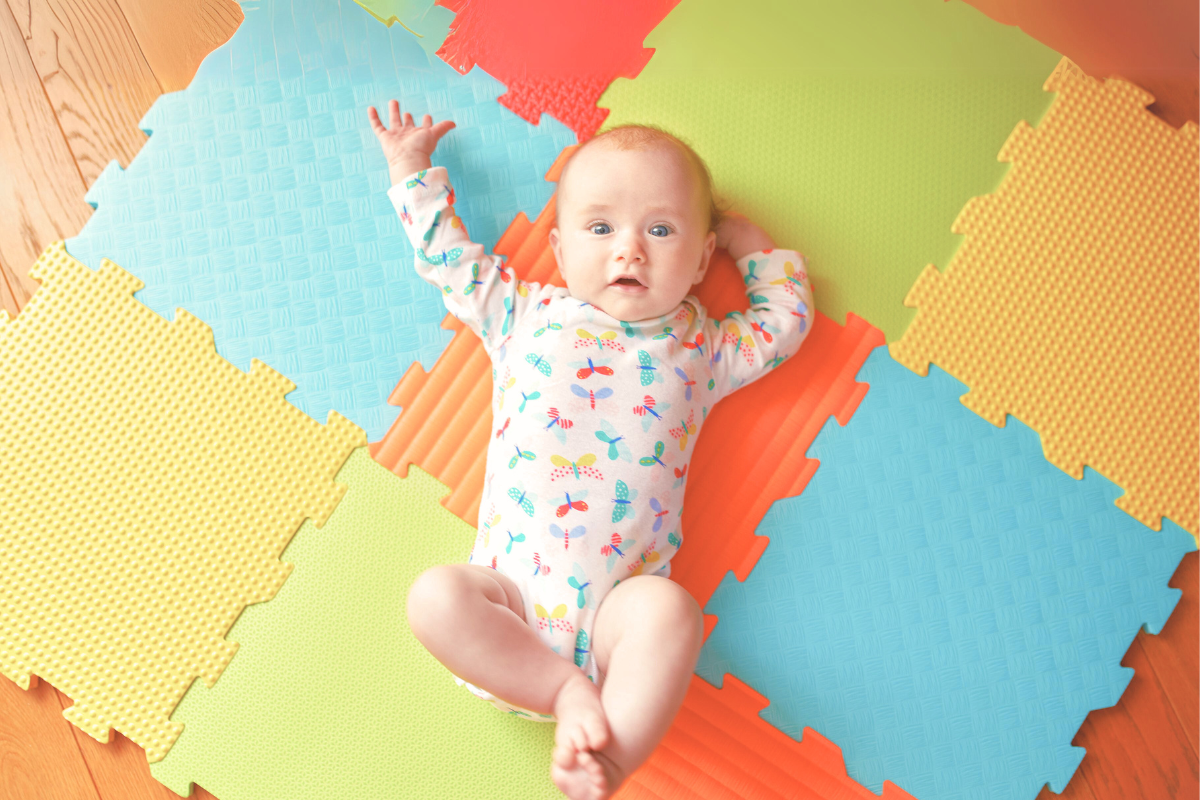
Picking the perfect mat isn’t just about finding the cutest design—though, let’s face it, that’s part of the fun. It’s about creating a safe, cozy spot for your little one to wiggle, roll, and eventually crawl. So, here’s your guide to choosing a playmat that checks all the boxes and keeps both you and your baby happy.
Key Features to Look For
Look for these features when you’re shopping for the best:
-
Cushioned comfort. Go for thick, soft mats that protect your baby during tummy time and crawling. Opt for hypoallergenic and non-toxic materials like cotton or linen for a gentle touch.
-
Easy cleaning. Babies are experts at making messes. A mat that’s wipeable, waterproof, or machine-washable makes it easy to keep things tidy, so you can spend less time scrubbing and more time playing.
-
Flip it over. Reversible options with different patterns on each side give you options to switch things up. This keeps playtime fresh and exciting as your baby’s preferences change.
-
Two-in-one magic. Some mats transform into baby gyms or activity centers, giving your baby a multifunctional space for tummy time, rolling, and reaching. A convertible mat means you get more play value as your little one develops new skills.
Final Thoughts
These are a fantastic tool for supporting your baby’s growth, offering a safe space for tummy time and motor skills development. Playtime duration should match your baby’s age, starting with brief sessions for newborns and increasing as they grow, all while keeping an eye out for signs of fatigue.
Choosing the right playmat means looking for features like soft, easy-to-clean surfaces, and engaging designs. With the right setup and a variety of toys, play mats become an enriching environment where your baby can explore and thrive safely!
